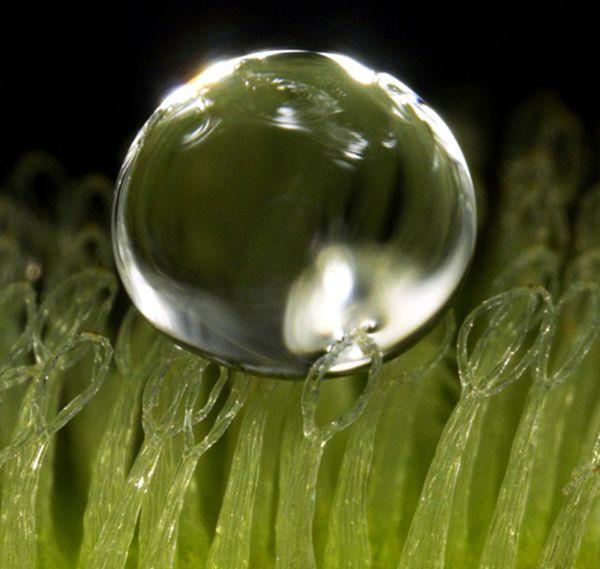Some water ferns can absorb large volumes of oil within a short time, because their leaves are strongly water-repellent and, at the same time, highly oil-absorbing. Researchers of KIT, together with colleagues of Bonn University, have found that the oil-binding capacity of the water plant results from the hairy microstructure of its leaves. It is now used as a model to further develop the new Nanofur material for the environmentally friendly cleanup of oil spills. (DOI: 10.1088/1748-3190/11/5/056003)
Damaged pipelines, oil tanker disasters, and accidents on oil drilling and production platforms may result in pollutions of water with crude or mineral oil. Conventional methods to clean up the oil spill are associated with specific drawbacks. Oil combustion or the use of chemical substances to accelerate oil decomposition cause secondary environmental pollution. Many natural materials to take up the oil, such as sawdust or plant fibers, are hardly effective, because they also absorb large amounts of water. On their search for an environmentally friendly alternative to clean up oil spills, the researchers compared various species of aquatic ferns. “We already knew that the leaves of these plants repel water, but for the first time now, we have studied their capacity to absorb oil,” Claudia Zeiger says. She conducted the project at KIT’s Institute of Microstructure Technology.
Aquatic ferns originally growing in tropical and subtropical regions can now also be found in parts of Europe. As they reproduce strongly, they are often considered weed. However, they have a considerable potential as low-cost, rapid, and environmentally friendly oil absorbers, which is obvious from a short video at http://www.
Based on this new knowledge on the relationship between surface structure of leaves and their oil-absorbing capacity, the researchers improved the ‘Nanofur’ material developed at their institute. This plastic nanofur mimics the water-repellent and oil-absorbing effect of salvinia to separate oil and water. “We study nanostructures and microstructures in nature for potential technical developments,” says Hendrik Hölscher, Head of the Biomimetic Surfaces Group of the Institute of Microstructure Technology of KIT. He points out that different properties of plants made of the same material frequently result from differences of their finest structures.


